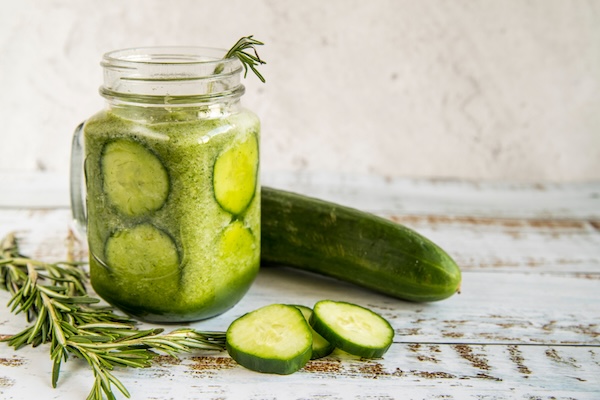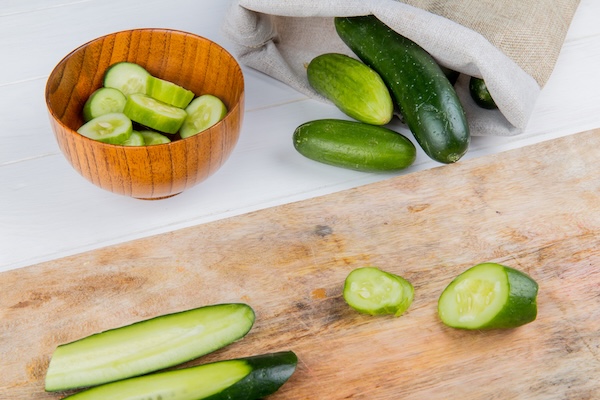Organic Cucumbers: Versatile in Both Raw and Cooked Preparations
- 2024-12-16
- 2024-12-16
- / 831 Views
- /

Cucumbers trace their origins to the southern foothills of the Himalayas in India, where they were originally named after the Huns. Over two millennia ago, during the Western Han Dynasty, the esteemed diplomat Zhang Qian embarked on a mission to the Western Regions and returned with this particular cucumber variety to the Central Plains. This momentous introduction was documented in the "Compendium of Materia Medica," which states, "Zhang Qian brought back this cucumber variety from the Western Regions, thus it was named after the Huns. Intriguingly, it is rumored that Emperor Yang of the Sui Dynasty (569–618) changed the name to cucumbers due to his aversion to the term "Huns". Having been imported from Japan in the early 20th century, cucumbers made their way to Taiwan and swiftly established themselves as a year-round culinary delicacy on Taiwanese dining tables.
Cucumbers are a shallow-rooted, short-term vegetable that thrives in abundant sunlight and flourishes at temperatures ranging from approximately 20-30°C. They grow well in well-drained, deep soils. With a relatively short growth cycle of approximately 60 to 90 days, their primary harvest season falls between March and November. Predominantly cultivated in regions such as Miaoli, Taichung, Nantou, Tainan, and Hualien, cucumbers find their abundance during the winter season in Southern Taiwan. Among these regions, Pingtung stands as the largest cucumber-producing base in Taiwan, contributing to a quarter of the nation"s total yield.

Traditionally grown cucumbers often raise concerns regarding pesticide residues. Consequently, organic cucumber cultivation has emerged as a compelling alternative. To sustain organic cucumber farming, small-scale farmers commit themselves to tasks like meticulous pruning of side shoots and thinning of fruits, all of which serve to concentrate vital nutrients while preserving optimal field ventilation. Avoiding the use of pesticides and chemical fertilizers, organic farms prioritize a thriving and diverse ecological environment. In addressing challenges posed by pests such as aphids and tobacco cutworms, organic materials like Bacillus thuringiensis, various types of oils, and homemade liquid fertilizers are thoughtfully applied for pest control.
Cucumbers boast a wealth of nutritional benefits. Remarkably, they consist of approximately 90% water, resulting in a refreshing, juicy, and crispy texture when consumed. Rich in potassium, cucumbers facilitate the removal of waste materials and excess sodium from the body. Additionally, their high vitamin C content offers skin-whitening effects, making them suitable for facial applications. What makes cucumbers particularly noteworthy is their content of Tartronic acid, which plays a vital role in inhibiting the transformation of carbohydrates into fat, thereby contributing to weight control. Furthermore, with an incredibly low caloric content of just 15 kilocalories per 100 grams, cucumbers have gained recognition as an excellent choice for those adhering to low-carb diets and seeking to achieve weight loss goals.
With their adaptability, cucumbers offer a wide array of culinary possibilities depending on how they are sliced and prepared. You may vertically cut them into sections, thinly slice them to create diagonal slices, or even cube them. This versatile vegetable opens the door to a plethora of delectable cucumber dishes. When enjoyed raw, cucumbers make for refreshing additions to salads, lend their invigorating essence to energizing soups, or can be transformed into delectable pickles when marinated in sweet vinegar. Their crisp texture makes them an excellent choice for clearing heat and quenching thirst during hot weather. For those seeking to elevate their noodle or sesame sauce, shredded cucumbers serve as a perfect enhancement that adds a delightful crunch and flavor. Shredded cucumbers may also be quickly stir-fried with eggs over high heat, or simply mixed in, offering homemakers a quick and delicious meal option. Moreover, cucumbers take on a new life after thinning, becoming classic accompaniments to Taiwanese congee in the form of "sauce cucumbers" and "crispy cucumbers".

When it comes to selecting organic cucumbers, it"s important to follow specific guidelines. Look for cucumbers that fall within the range of 14 to 18 centimeters in length and 3 centimeters in diameter. These cucumbers should present several visual characteristics to indicate their freshness and quality. First, pay attention to the cucumber"s surface. The ridges should be fresh and uniformly thick, and the shoulders, where the stem is attached, should form a noticeable raised area. The cucumber"s skin should feature distinct, protruding prickles and exhibit a vibrant green color, whether it"s a deep or pale shade. To assess its freshness, try gently bending the cucumber. A fresh one should exhibit resilience and snap with a slight resistance, indicating its firmness. Additionally, if it does break and releases a bit of juice, but then immediately adheres together tightly, this demonstrates its remarkable restorative quality. These criteria collectively serve as the secrets to skillfully selecting the freshest cucumbers.
While cucumbers are a staple in households, their cultivation is often affected by weather conditions. In an effort to tackle this challenge and attract the younger generation back to rural areas, farmers have initiated collaborations with schools. In recent years, they have been jointly working on research and development projects involving cucumber-based skincare products, such as cucumber face masks and essences. This innovative approach aims to not only enhance the value of cucumbers but also empower the younger generation to revitalize and modernize the cucumber industry.




